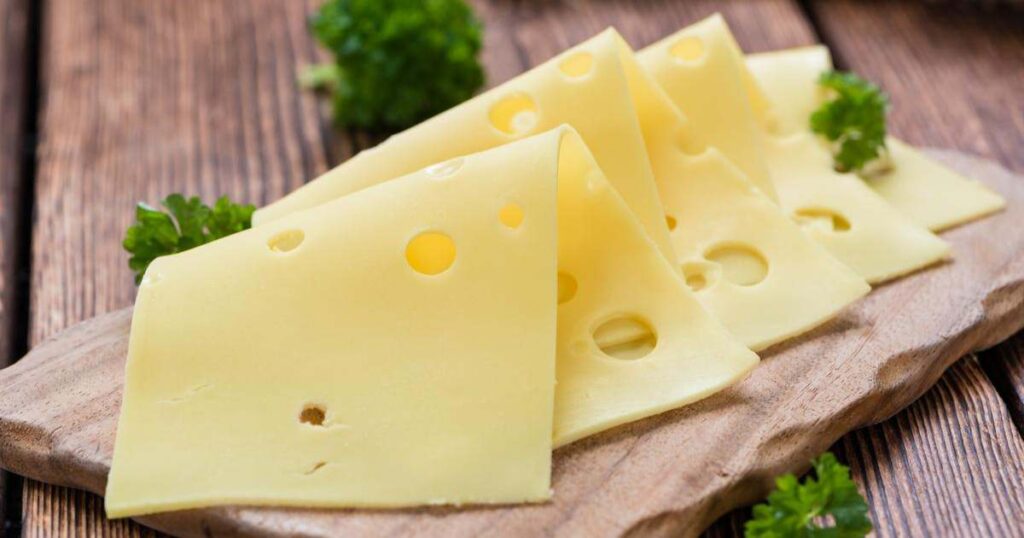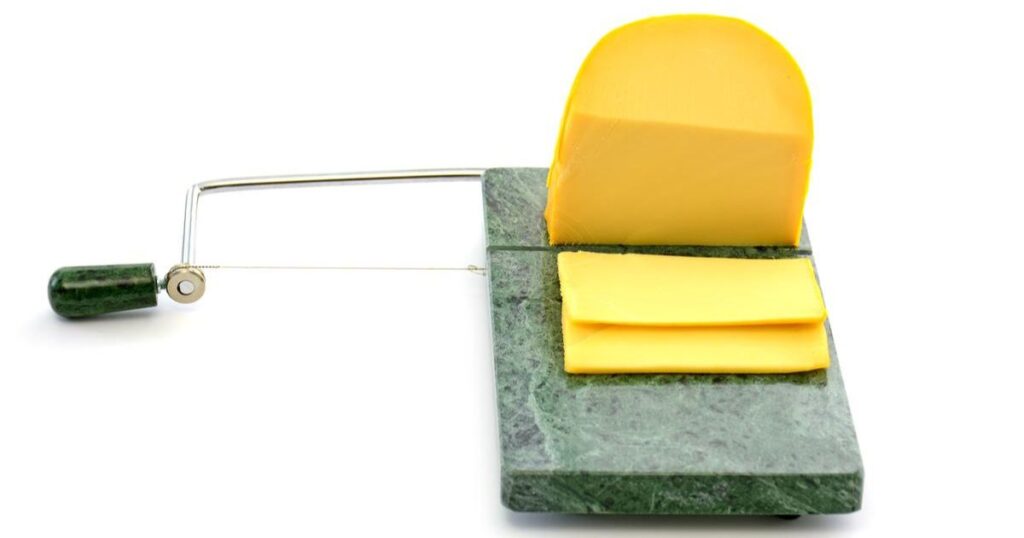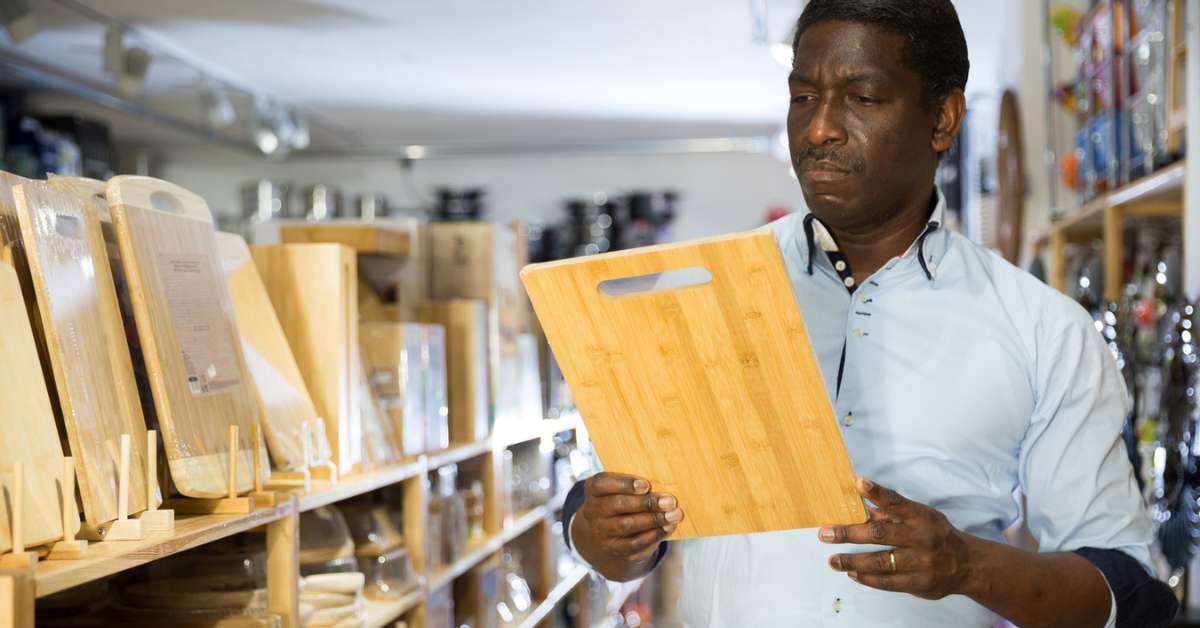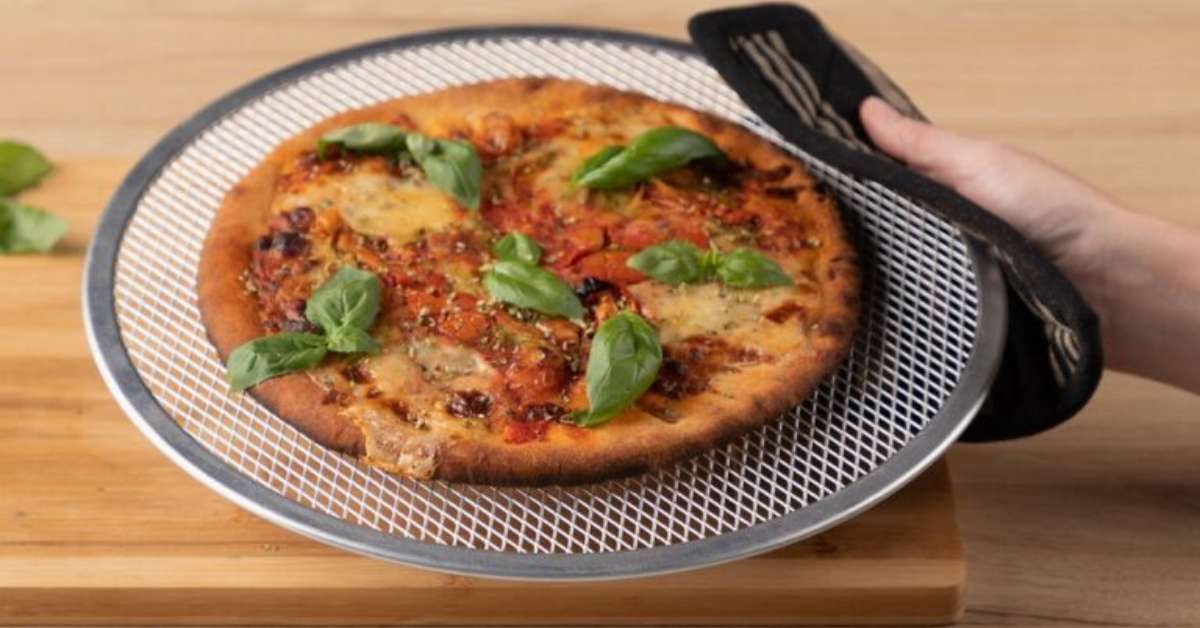Welcome to “The Ultimate Guide: Can You Slice Cheese with a Mandolin?” If you’re a cheese enthusiast or love experimenting with kitchen tools, you might have wondered whether a mandolin can slice cheese effectively. In this comprehensive article, we will dive into the world of mandolins and explore their potential when cutting various cheese types.
We’ll discuss the benefits and challenges of using a mandolin, safety precautions, and tips to achieve the perfect cheese slices. So, let’s get slicing and discover the possibilities of this versatile kitchen tool with our favourite dairy delight – cheese!
Table of Contents
ToggleBasics of Cheese Slicing

Before we delve into the specifics of using a mandolin for cheese slicing, let’s go over the fundamental principles of this culinary art. Slicing cheese is an age-old practice that requires skill and precision. How you slice cheese can significantly impact its taste, texture, and presentation. Whether planning a cheese platter for a gathering or simply preparing a sandwich, mastering the basics of cheese slicing is essential.
When slicing cheese, the slices’ thickness and the cut’s angle can make a significant difference. Thicker pieces offer a more substantial and indulgent experience, ideal for savouring artisanal cheeses with complex flavours. On the other hand, thinner slices are perfect for melting over dishes or adding a delicate touch to your culinary creations.
Cheese-slicing techniques can vary depending on the type of cheese. For example, hard cheeses like cheddar and parmesan require a firm and steady hand to achieve clean slices, while soft cheeses like brie and camembert demand a gentler touch to maintain their creamy texture. Understanding the nuances of each cheese variety will elevate your slicing game and enhance your culinary endeavours.
Understanding What a Mandolin is
No, we’re not talking about the musical instrument! In the culinary world, a mandolin is a versatile kitchen tool designed to simplify slicing fruits and vegetables with precision and consistency. It typically consists of a flat base with an adjustable blade, allowing you to control the thickness of your cuts. But can this handy tool be used for slicing cheese as well?
While mandolins are primarily known for their vegetable-slicing prowess, they can be employed to slice certain types of cheese. This opens up exciting possibilities for cheese enthusiasts and home cooks looking to add a creative touch to their culinary ventures. However, there are some essential factors to consider when using a mandolin for cheese slicing to ensure both safety and optimal results.
To use a mandolin effectively for cheese, choosing the right type of cheese and understanding its texture is essential. Hard cheeses like Gouda, Parmesan, or Manchego are more suitable for slicing with a mandolin, as they maintain their shape and can withstand the blade’s pressure. Softer cheeses, like blue cheese or goat cheese, may crumble or stick to the edge, making them less suitable for this slicing method.
Safety is paramount when using a mandolin, as its sharp blade can cause accidents if not handled carefully. Always use the provided hand guard to protect your fingers and maintain a steady grip on the cheese while slicing. With the proper technique and a cautious approach, a mandolin can be a fantastic tool for achieving uniform and visually appealing cheese slices.
Can Mandolins Slice Cheese
The answer is a resounding yes! Mandolins can indeed be used to slice cheese, adding an extra dimension to the capabilities of this versatile kitchen tool. While mandolins are well-known for their proficiency in cutting vegetables, they can be equally effective when handling certain types of cheese.
When selecting a mandolin for cheese slicing, opt for one with a sharp blade and adjustable thickness settings. This will allow you to achieve the desired thickness for your cheese slices, whether you prefer them to be thin and delicate or thick and hearty.
As mentioned earlier, it’s crucial to consider the type of cheese you’re working with. Hard cheeses such as cheddar, Swiss, and provolone work exceptionally well with mandolins. Their firm texture ensures clean and uniform slices, enhancing the overall presentation of your culinary creations.
However, please exercise caution when using a mandolin with softer cheeses like brie, feta, or mozzarella, as their delicate texture can lead to uneven slices or sticking to the blade. In such cases, it’s best to resort to traditional hand-cutting methods to preserve the integrity of these cheeses.
Practice proper safety measures to ensure a seamless cheese-slicing experience with a mandolin. Always use the hand guard provided with the mandolin to protect your fingers from the sharp blade. Maintain a firm grip on the cheese and apply even pressure while gliding it across the mandolin to achieve consistent slices.
Using a Mandolin to Slice Cheese
Slicing cheese with a mandolin can be a rewarding experience, but it requires a careful approach to achieve the best results. To master the art of cheese slicing with a mandolin, follow these steps:
Selecting the Right Cheese: As mentioned earlier, choosing the right type of cheese is crucial when using a mandolin. Opt for firm and hard cheeses like Gouda, cheddar, or gruyere, as they slice beautifully and maintain shape. Avoid softer or crumbly cheeses, as they may not yield the desired results.
Preparation: Before slicing, ensure your mandolin is set up correctly. Adjust the blade to the desired thickness, considering the type of cheese and your preference. It’s recommended to start with a thicker setting and gradually make it thinner to find the perfect slice.
Safety First: Safety should always be a top priority when using a mandolin. Use the hand guard to protect your fingers from the sharp blade. Hold the cheese firmly and keep your fingers away from the edge as you slide it across the mandolin.
Steady and Even Pressure: Apply constant pressure on the cheese as you glide it over the blade. Avoid rushing or forcing the cheese through the mandolin, which may lead to uneven or jagged slices.
Watch the Fingers: As you near the end of the cheese block, be cautious about your fingers’ proximity to the blade. Using a vegetable holder or stopping slicing is best when the cheese piece becomes too small to hold securely.
Maintain Hygiene: Ensure your mandolin and cutting area are clean and sanitized. This helps prevent any contamination and maintains the integrity of the cheese.
Experiment and Enjoy: Don’t hesitate to experiment with different cheese varieties and thicknesses to discover what works best for your taste and presentation preferences. Slicing cheese with a mandolin allows you to create stunning platters and garnishes that will impress your guests.
By following these guidelines, you can harness the full potential of your mandolin and take your cheese-slicing skills to the next level. Remember, practice makes perfect, so embrace the process and have fun while creating beautiful and delicious cheese slices for your culinary delights.
Comparing Mandolins with Other Cheese Slicers
When it comes to cheese slicing, mandolins are just one of the many tools available. Each cheese slicer option comes with its own set of advantages and disadvantages. Let’s explore how mandolins stack up against other cheese slicers:
Pros of Using a Mandolin for Cheese Slicing
Versatility: Mandolins are not limited to slicing cheese alone. They can also be used for various fruits and vegetables, making them a versatile addition to your kitchen arsenal.
Adjustable Thickness: Mandolins come with adjustable blades, allowing you to control the thickness of your cheese slices to suit your preferences and recipes.
Uniform Slices: When used correctly, mandolins can produce even and consistent cheese slices, enhancing the overall presentation of your dishes.
Time-Saving: Using a mandolin can significantly reduce the time spent slicing cheese, especially when preparing more significant quantities.
Cons of Using a Mandolin for Cheese Slicing
Safety Concerns: Mandolins have sharp blades, which can be hazardous if not handled carefully. Always use the hand guard and exercise caution to prevent accidents.
Limited to Certain Cheeses: While mandolins work well with firm cheeses, they may not be suitable for softer or crumbly varieties, limiting their versatility in cheese slicing.
Storage and Maintenance: Some mandolins can be bulky and require proper storage. Also, cleaning and maintaining the blade’s sharpness can be more involved.
Other Cheese Slicer Options

Wire Cheese Slicer: This slicer uses a thin wire to cut through the cheese. It’s great for softer cheeses and provides a level of precision similar to that of a mandolin. However, it may not offer adjustable thickness settings.
Cheese Plane Slicer: A cheese plane is a handheld slicer with a flat blade. It’s easy to use and works well with medium and hard cheeses, but achieving consistent thickness can be challenging.
Rotary Cheese Grater: This slicer has a rotating drum with sharp blades to grate cheese. While it may not create slices, it’s an excellent alternative for shredding cheese quickly.
Electric Cheese Slicer: Electric slicers are motorized machines that slice cheese effortlessly. They offer convenience and speed, but they can be expensive and may take up more space in the kitchen.
Ultimately, choosing a cheese slicer depends on your preferences, the types of cheese you commonly use, and your comfort level with the tool. Each option has unique features and benefits, so feel free to experiment and find the slicer that best suits your cheese-slicing needs.
Maintenance and Care for Your Mandolin
Proper maintenance and care are essential to keep your mandolin in excellent condition, ensuring its longevity and optimal performance. Here are some helpful tips to help you maintain and care for your mandolin:
Cleaning After Use: After each use, make it a habit to clean your mandolin thoroughly. Wash the blades, hand guard, and other removable parts with warm soapy water. Use a brush or sponge to remove food particles stuck on the edge.
Handle with Care: Avoid sharp blades when handling the mandolin. Always use the hand guard provided with the mandolin to protect your fingers. Store the hand guard and mandolin separately to prevent accidental injuries.
Avoid Dishwashers: Unless the manufacturer specifies that your mandolin is dishwasher-safe, it’s best to hand wash it. Dishwashers can cause the blade to become dull or damage other delicate parts of the mandolin.
Sharpen the Blade: Regularly check the sharpness of the mandolin’s blade. If it becomes dull over time, use a mandolin-specific blade sharpener or take it to a professional for sharpening. A sharp knife ensures clean and effortless slicing.
Storage: Store your mandolin in a safe and dry place when not in use. Some mandolins come with protective cases or covers; if yours doesn’t, consider investing in one to prevent dust and damage.
Lubrication: Some mandolins may require occasional lubrication to ensure smooth operation. Check the manufacturer’s guidelines for specific recommendations.
Please avoid Contact with Water: While cleaning is essential, avoid submerging the mandolin’s body or leaving it in standing water. This can cause damage to the internal mechanisms and affect its performance.
Inspect for Wear and Tear: Regularly inspect your mandolin for signs of wear and tear. Check for loose parts or any damage that may compromise its functionality. Address any issues promptly to avoid further damage.
Follow the Manufacturer’s Instructions: Different mandolin models may have specific care instructions provided by the manufacturer. Always refer to these instructions to ensure you care for your mandolin correctly.
Following these maintenance and care tips ensures that your mandolin remains in excellent working condition, allowing you to continue slicing cheese and other ingredients quickly and precisely. A well-maintained mandolin is safer to use and enhances your overall cooking experience. Happy slicing!
Conclusion
In this ultimate guide, we explored the world of cheese slicing with mandolins and beyond. We learned that mandolins can slice cheese effectively, providing uniform and visually appealing slices when used correctly. However, it’s essential to choose the right type of cheese and exercise caution to ensure safety and optimal results.
We compared mandolins with other cheese slicers, highlighting their pros and cons, and discovered that each option has unique benefits. By following maintenance tips and utilizing helpful tricks, you can master the art of cheese slicing and elevate your culinary creations. Embrace the versatility of your mandolin, experiment with various cheeses, and enjoy the delightful world of perfectly sliced cheese!
FAQs
Can all types of cheese be sliced with a mandolin?
While mandolins can effectively slice firm and hard cheeses like cheddar, Gouda, and Swiss, not all types of cheese are suitable for this method. Softer and crumbly cheeses may not yield the best results and can stick to the blade, making hand-cutting a better option for such varieties.
How do I clean my mandolin after slicing cheese?
Cleaning your mandolin after use is crucial for maintaining its performance and hygiene. Wash the removable parts with warm soapy water, such as the blades and hand guard. Use a brush or sponge to remove any residue. Avoid submerging the entire mandolin, and never leave it in standing water.
Is it safe to use a mandolin to slice cheese at home?
Yes, using a mandolin to slice cheese at home is safe if you follow proper safety measures. Always use the hand guard provided to protect your fingers from the sharp blade. Exercise caution and maintain a steady grip on the cheese while slicing. With practice and care, you can achieve safe and precise cheese slices.
What is the best way to store a mandolin?
Store your mandolin in a safe and dry place when not in use. Some mandolins come with protective cases or covers, which can help prevent dust accumulation and protect the blade. Consider investing in one or storing your mandolin in a secure drawer if it has no body.
Can a mandolin be used to slice other foods besides cheese?
Absolutely! Mandolins are versatile kitchen tools that can precisely slice various fruits and vegetables. From cucumbers and carrots to apples and potatoes, a mandolin can be a valuable asset for a wide range of cutting needs in your kitchen. Remember to adjust the blade thickness and handle carefully when using different ingredients.






